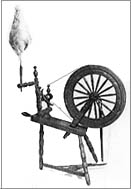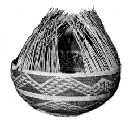The Importance of Periodic Inventories
by Peggy Schaller
There are two main reasons for doing periodic inventories. No, it is not just to make you do more work! Inventories are an important function of museum collections management. The main reason is to keep track of your collections. You cannot display or otherwise utilize what you cannot find. If you cannot find it, you have not lived up to your public trust responsibilities regarding your collection and the object might just as well be gone. And how do you know it is not gone? Maybe there has been a theft of which you are not aware?Secondly, periodic inventories allow you to monitor the condition of the objects. Doing an inventory forces you to look at each individual artifact as you are verifying that it is where it is supposed to be. This is the perfect opportunity to make an examination of the current condition of your objects. If that small crack you noticed last time has gotten bigger, maybe the environmental controls need to be checked. If there is evidence of insects where there was none before, maybe you have an infestation that needs to be dealt with. Many small or large changes can be caught by regular examination of your collection. Excerpt from MS218: Collection Inventories taught once a year by Peggy Schaller. Peggy Schaller founded Collections Research for Museums in 1991 to provide cataloging, collection-management training and services. She has worked with a large variety of museums and collections for more than 18 years. Peggy, who lives in Denver, Colorado, has a bachelor's degree in anthropology with minors in art history and geology from the University of Arizona in Tucson. She has a master's degree in anthropology with a minor in museum studies from the University of Colorado in Boulder and is a Certified Institutional Protection Manager II. She provides workshops and project services to museums and historical societies all across the country. The mission of Collections Research for Museums is to inspire museums to improve their professional standards, collections stewardship and service to their constituency through training in, and assistance with, documenting, preserving, protecting and managing their collections. |

|
|
|
Welcome to the Collections Caretaker e-Newsletter from Northern States Conservation Center. The newsletter is designed to bring you timely and helpful content that is pertinent to situations we all encounter in our museum and archives work. Feel free to let us know what topics you would like to see featured in Collections Caretaker or even contribute an article.
|
|
|
5% off two or more courses
|
Textiles and Their Structures
by Ann Coppinger
Textiles go through a great deal of processing from their raw state to the finished, utilitarian product. They are then used and cared for by their owners. All of these factors contribute to the history of the object and its eventual destruction.
 | | Spinning Wheel |
The smallest element of a textile is the fiber. They can be finite length (staple) or a seemingly infinite length (filament). Most fibers are spun or twisted together to form a long, continuous strand called a yarn. (An exception is felted textiles, whereby fibers are joined in the presence of heat, moisture and agitation to form a mat-like textile usually made from wool.) Yarns can be singled strands or plied with another yarn to give increased strength or dimensional uniformity. Yarns are woven or knitted into whole cloth or purposefully shaped based on the final intended cloth object.
Dyes, pigments and special finishes color or decorate textiles. Textiles can be dyed either at the fiber, yarn or whole cloth stages. Dyes chemically unite with the textile while pigments simply sit on top of the textile substrate. Textile finishes are achieved through mechanical or chemical processing. Textiles can also be embellish with embroidered stitches, beads or sequins and metallic elements. The processing and added features make care of textiles a sometimes precarious situation.
Natural fibers can be divided into two distinct groups, those that come from animals and those that are plant based. Cotton and linen (called flax in its fiber form) come from plants and are composed mainly of cellulose. Silk and wool (for the sake of simplicity, I will use this term to refer to all animal hair) are from animals and are composed of proteins. All of these fibers, in their natural state, need water or moisture to grow and survive. Their physical structure is conducive to transporting moisture. That's good news when they are part of living organisms. This continues to be a positive attribute when fibers are turned into utilitarian textile objects. Most natural textiles are valued for their ability to absorb liquids, feel comfortable against the skin and retain warmth.
However, when textiles enter museum collections, they are no longer used except for study as objects that tell a story. More than likely, they are compromised and weakened from their previous owner's care and use. The once positive attribute now becomes an inherent vice, making textiles one of the more fragile objects a museum can have in its collection. Textiles fibers retain their ability to absorb and lose moisture. Therefore textile objects respond to humidity fluctuations in their environment, causing slight physical movements to the fibers as they take in and release moisture. Constant expansion and compression within the fiber's structure serves to severely weaken the textile overall. This is one of the primary reasons a stable environment is critical to good textile care.
Excerpt from MS212: Care of Textiles taught by Ann Coppinger.
Ann Coppinger runs the conservation department and teaches conservation at the Fashion Institute of Technology in New York. She has a master's in museum studies specializing in costume and textile conservation from FIT. She is a former NEA master apprentice at the Textile Conservation Workshop. Ms. Coppinger previously worked for 22 years in fashion in New York City. She has degrees in both fashion design and pattern making from FIT.
|
Baskets - a Global Craft
by Helen Alten
All baskets are handmade. That one fact is astounding. There is no such thing as a machine-made basket. Baskets are found in every culture in the world. Their materials reflect the bio-diversity of their locations. Most baskets have a plant source, but there are baskets made from animal materials, baleen being the most well-known of these. There are baskets made from man-made materials, too. Telephone wire baskets are striking. Plastic Easter baskets are less awe-inspiring. And duct tape baskets are one of those phenomena of modern culture fads.
Basketry objects include vessels, socks, hats, clothing, houses, sieves, fish traps, nets, and, most common, containers. They are made for every day use or for tourist trade. Today, baskets are important export items, bringing in revenue to indigenous peoples and revitalizing impoverished communities. Basket making is something a mother can do while overseeing her children. It is common to see a group of women sitting in the shade, making baskets and talking, while the children play around them. Basketry builds community.
 | | Twinning a basket |
There are only three methods of making a basket - twining, plaiting and coiling. Wicker is a variant of twining, and sometimes considered a fourth technique. The uprights are called the warp and the weavers are the weft in twined and plaited baskets. The weft, either two or three strand, twists around the warp in a twined basket. A plaited basket is like a textile, with the weft going over and under the warp in a plain or twill weave. It is commonly used for making mats. Coiled baskets go round and round, like a coiled ceramic pot construction or a rag rug. There is a bundle that forms the center of the coil and stitching that holds one coil on top of the other. Often the stitching also wraps the bundle. A coiled basket from Africa may look like a coiled basket from Alaska. Sometimes the way to identify the difference is through the plants used in construction. In order to identify these plants, one often needs to look at a thin section under the microscope. Each plant has a unique structure when viewed this way, allowing identification. Another identifier may be the added decoration, the dyes, especially if they are natural, and fancy weave variations.
The plants and their juxtaposition in the basket contribute to its care requirements. Woven plant materials move with relative humidity fluctuations. If dirt or dust is embedded into the weave, that movement causes the dust particles to abrade the basket fibers, leading to cuts and breakage. The fibers also lose their flexibility, becoming more brittle as they deteriorate. This is hastened by light, heat and relative humidity fluctuations. Many basketry dyes are fugitive. They fade with light exposure and may run when wet. Feather decorations, common in California's Pomo baskets, are favorite foods of protein eating beetles. If the feathers are still present on older baskets, there is a likelihood the baskets have been heavily treated with residual poisons. Care of baskets requires an understanding of their materials, how they deteriorate, and what might be needed to prevent or slow deterioration.
Helen Alten, is the Director of Northern States Conservation Center and its chief Objects Conservator. She created MS225: Care of Baskets. It is now being taught by Sherry Doyal, head of the organic artefacts conservation section at the British Museum. Ms. Doyal specializes in conservation of botanic materials. She received a conservation and restoration studies certificate with distinction from Lincoln College of Art in 1980 and a diploma in design and craft (constructed textiles) in the context of basketry from City Literacy College, London in 2008. In her spare time she is a maker and exhibitor of contemporary basketry works.
|
|
Northern States Conservation Center (NSCC) provides training, collection care, preservation and conservation treatment services. NSCC offers online museum studies classes at www.museumclasses.org in Collections Management & Care, Museum Administration & Management, Exhibit Practices and Museum Facilities Management.
Sincerely,
Helen Alten, DirectorBrad Bredehoft, Sales and Technology Manager
|
|
|
|
|



